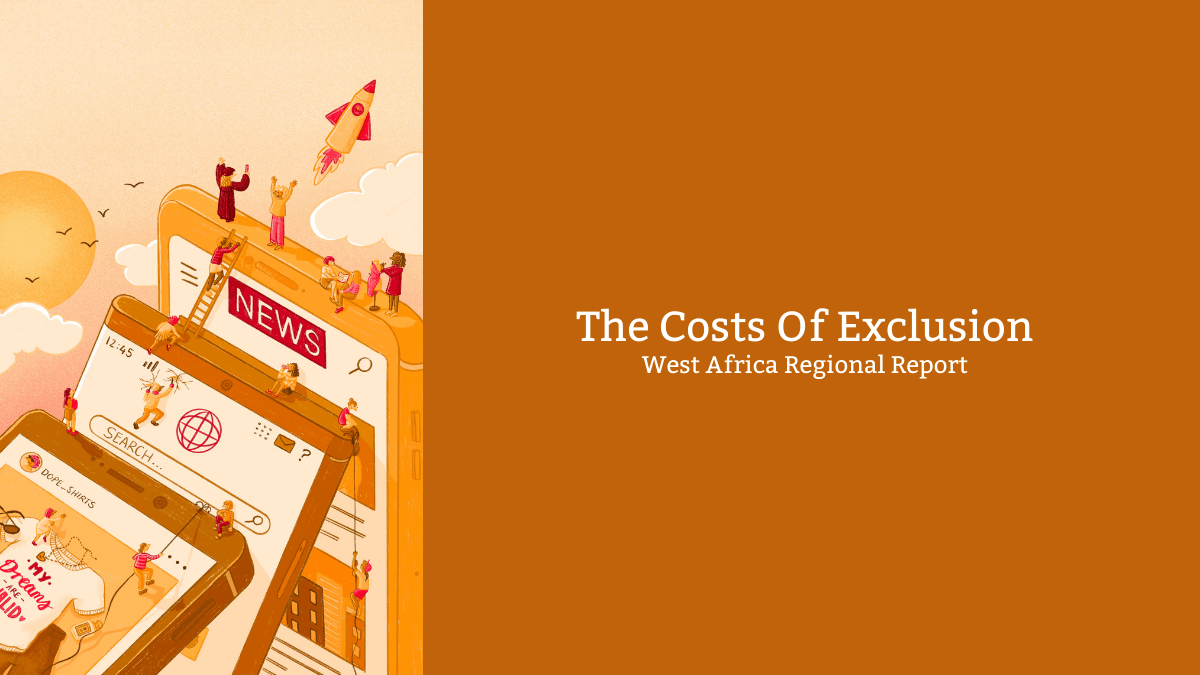Our costs of exclusion report found that the digital gender gap has cost 32 countries $1 trillion in lost-GDP in the past decade, underlining the huge economic price we all pay when women have less access to the internet’s benefits.
Now, our West Africa report zooms in on the impact of internet access and exclusion for women living in the region, with evidence from interviews and focus groups with women in both Cote d’Ivoire and Nigeria, and a telephone survey in Nigeria.
Here are the top takeaways:
1. In West Africa, men are far more likely to be able to use the internet than women. In a region where 32%of people are online, for every three men using the internet, there are just two women connected. This divide is representative of Sub-Saharan Africa more broadly which has a large and stubborn gender gap in mobile phone ownership and internet use.
2. West African countries missed out on billions of dollars in 2020, due to this gender divide. We estimate that the seven West African countries included in our model missed out on a collective $18.4 billion USD GDP in 2020.
In addition, based on our mobile survey of over 1,000 Nigerian women with a mobile phone, we discovered:
3. Women’s internet use matches the capacity of the type of device they own. Internet non-users largely owned basic phones (82%), whereas internet users typically owned smartphones (81%).
| Figure C. Respondent device ownership, by internet use. |
4. Women who use the internet are far more likely to say they could find information and participate in their community. For example, internet users with a tertiary education were twice as likely to say they could find out how to schedule a doctor’s appointment and more than twice as likely to be able to find out the date of the next election. They were three times as likely to be able to find out how to report a crime.
5. Women with internet access were 3.5 times more likely to have looked for a job in the past three months. And they were seven times more likely to have taken a class in the past three months.
6. Internet access gives women more confidence as consumers. Women with internet access were around twice as likely to report that they were able to find products at a good price, open a bank account, and find people to hire to do work for them.
7. Internet users are better able to identify Covid-19 symptoms.69% of internet users with a tertiary education responded that they could find out what symptoms of coronavirus are, compared with just 29% of non-users with the same education level.
8. Internet access increased women’s economic resilience during the Covid-19 pandemic. Respondents with internet access were 10% less likely to report a negative impact on their income as a result of the pandemic, compared to those without a connection.
9. The biggest factor keeping women offline is the lack of an internet-enabled device. When women who own mobile phones were asked about the barriers keeping them offline, 61.9% said the limited functionality of their device was the main reason.
—
Our cost of exclusion report shows that digital exclusion hurts not only those who can’t get online, but everyone who misses out on their ideas and contributions. Our West Africa Regional report demonstrates the ways that women have adopted internet technologies to improve their lives and generate opportunities. To maximise this impact, leaders must prioritise investing in bridging digital divides to grow economies, reduce equalities and improve societies.
For more updates, follow us on Twitter at @webfoundation and sign up to receive our newsletter.
To receive a weekly news brief on the most important stories in tech, subscribe to The Web This Week.
Tim Berners-Lee, our co-founder, gave the web to the world for free, but fighting for it comes at a cost. Please support our work to build a safe, empowering web for everyone.
